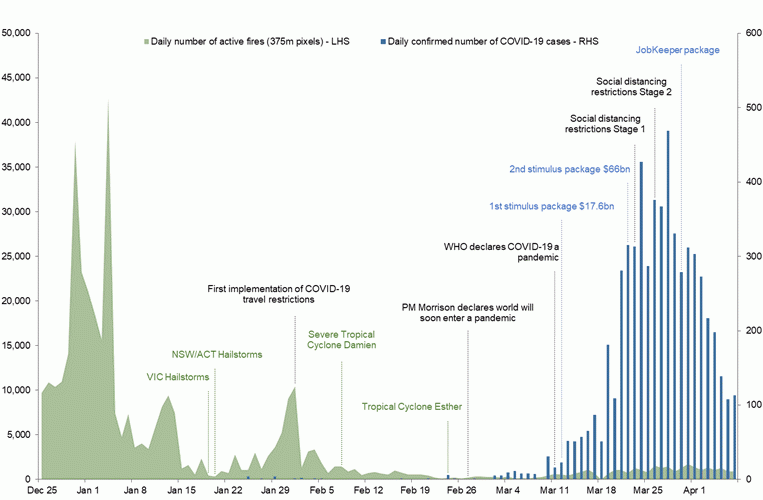Figure 16: Average price of unleaded petrol (91 Octane), cents per litre
[["Mar19","Mar19","Mar19","Mar19","Mar19","Mar19","Mar19","Mar19","Mar19","Mar19","Mar19","Mar19","Mar19","Mar19","Mar19","Mar19","Mar19","Mar19","Mar19","Mar19","Mar19","Mar19","Mar19","Mar19","Mar19","Mar19","Mar19","Mar19","Mar19","Mar19","Mar19","Mar19","Mar19","Mar19","Mar19","Mar19","Mar19","Mar19","Mar19","Mar19","Mar19","Mar19","Mar19","Mar19","Mar19","Mar19","Mar19","Mar19","Mar19","Mar19","Mar19","Mar19","Mar19","Mar19","Mar19","Mar19","Mar19","Mar19","Mar19","Mar19","Mar19","Mar19","Mar19","Mar19","Mar19","Mar19","Mar19","Mar19","Mar19","Mar19","Mar19","Mar19","Mar19","Mar19","Mar19","Mar19","Mar19","Mar19","Mar19","Mar19","Mar19","Mar19","Mar19","Mar19","Mar19","Mar19","Mar19","Mar19","Mar19","Mar19","Jun19","Jun19","Jun19","Jun19","Jun19","Jun19","Jun19","Jun19","Jun19","Jun19","Jun19","Jun19","Jun19","Jun19","Jun19","Jun19","Jun19","Jun19","Jun19","Jun19","Jun19","Jun19","Jun19","Jun19","Jun19","Jun19","Jun19","Jun19","Jun19","Jun19","Jun19","Jun19","Jun19","Jun19","Jun19","Jun19","Jun19","Jun19","Jun19","Jun19","Jun19","Jun19","Jun19","Jun19","Jun19","Jun19","Jun19","Jun19","Jun19","Jun19","Jun19","Jun19","Jun19","Jun19","Jun19","Jun19","Jun19","Jun19","Jun19","Jun19","Jun19","Jun19","Jun19","Jun19","Jun19","Jun19","Jun19","Jun19","Jun19","Jun19","Jun19","Jun19","Jun19","Jun19","Jun19","Jun19","Jun19","Jun19","Jun19","Jun19","Jun19","Jun19","Jun19","Jun19","Jun19","Jun19","Jun19","Jun19","Jun19","Jun19","Jun19","Sep19","Sep19","Sep19","Sep19","Sep19","Sep19","Sep19","Sep19","Sep19","Sep19","Sep19","Sep19","Sep19","Sep19","Sep19","Sep19","Sep19","Sep19","Sep19","Sep19","Sep19","Sep19","Sep19","Sep19","Sep19","Sep19","Sep19","Sep19","Sep19","Sep19","Sep19","Sep19","Sep19","Sep19","Sep19","Sep19","Sep19","Sep19","Sep19","Sep19","Sep19","Sep19","Sep19","Sep19","Sep19","Sep19","Sep19","Sep19","Sep19","Sep19","Sep19","Sep19","Sep19","Sep19","Sep19","Sep19","Sep19","Sep19","Sep19","Sep19","Sep19","Sep19","Sep19","Sep19","Sep19","Sep19","Sep19","Sep19","Sep19","Sep19","Sep19","Sep19","Sep19","Sep19","Sep19","Sep19","Sep19","Sep19","Sep19","Sep19","Sep19","Sep19","Sep19","Sep19","Sep19","Sep19","Sep19","Sep19","Sep19","Sep19","Sep19","Sep19","Dec19","Dec19","Dec19","Dec19","Dec19","Dec19","Dec19","Dec19","Dec19","Dec19","Dec19","Dec19","Dec19","Dec19","Dec19","Dec19","Dec19","Dec19","Dec19","Dec19","Dec19","Dec19","Dec19","Dec19","Dec19","Dec19","Dec19","Dec19","Dec19","Dec19","Dec19","Dec19","Dec19","Dec19","Dec19","Dec19","Dec19","Dec19","Dec19","Dec19","Dec19","Dec19","Dec19","Dec19","Dec19","Dec19","Dec19","Dec19","Dec19","Dec19","Dec19","Dec19","Dec19","Dec19","Dec19","Dec19","Dec19","Dec19","Dec19","Dec19","Dec19","Dec19","Dec19","Dec19","Dec19","Dec19","Dec19","Dec19","Dec19","Dec19","Dec19","Dec19","Dec19","Dec19","Dec19","Dec19","Dec19","Dec19","Dec19","Dec19","Dec19","Dec19","Dec19","Dec19","Dec19","Dec19","Dec19","Dec19","Dec19","Dec19","Dec19","Dec19","Mar20","Mar20","Mar20","Mar20","Mar20","Mar20","Mar20","Mar20","Mar20","Mar20","Mar20","Mar20","Mar20","Mar20","Mar20","Mar20","Mar20","Mar20","Mar20","Mar20","Mar20","Mar20","Mar20","Mar20","Mar20","Mar20","Mar20","Mar20","Mar20","Mar20","Mar20","Mar20","Mar20","Mar20","Mar20","Mar20","Mar20","Mar20","Mar20","Mar20","Mar20","Mar20","Mar20","Mar20","Mar20","Mar20","Mar20","Mar20","Mar20","Mar20","Mar20","Mar20","Mar20","Mar20","Mar20","Mar20","Mar20","Mar20","Mar20","Mar20","Mar20","Mar20","Mar20","Mar20","Mar20","Mar20","Mar20","Mar20","Mar20","Mar20","Mar20","Mar20","Mar20","Mar20","Mar20","Mar20","Mar20","Mar20","Mar20","Mar20","Mar20","Mar20","Mar20","Mar20","Mar20","Mar20","Mar20","Mar20","Mar20","Mar20","Mar20"],[[121.95072949999999],[121.4840367],[120.61309420000001],[119.4042657],[117.8915208],[116.86233900000001],[115.9374305],[120.3312459],[120.0534553],[120.25626250000001],[120.178335],[119.7912414],[119.3845304],[117.8871],[122.95402420000001],[125.10722869999999],[128.7073906],[131.42801399999999],[133.5698716],[133.65807269999999],[132.1255137],[135.9919658],[135.616162],[135.40286560000001],[135.04908649999999],[133.20807400000001],[132.18562850000001],[128.97657709999999],[133.08709680000001],[131.61774819999999],[131.3435283],[128.67937119999999],[127.6695958],[127.9683198],[126.6641929],[129.7205452],[128.7075571],[127.5116388],[126.2324169],[125.5727077],[124.1420827],[121.9301092],[124.8969891],[123.6779379],[123.24005889999999],[125.4111152],[130.69828390000001],[133.56090990000001],[135.24840979999999],[141.33591390000001],[141.2884651],[140.21177220000001],[138.80402169999999],[137.1335085],[136.050366],[134.7047263],[137.91915180000001],[136.7930638],[135.76110739999999],[133.7358069],[132.16767580000001],[131.06107030000001],[129.71443360000001],[132.32518260000001],[131.45402240000001],[130.0583781],[129.2336296],[129.0372663],[128.63870349999999],[128.26159039999999],[133.6153363],[134.75750919999999],[136.48149330000001],[138.38467410000001],[139.0784653],[139.42533649999999],[141.51844399999999],[148.48809069999999],[149.32613359999999],[147.94276819999999],[146.17813369999999],[144.7122249],[143.6589362],[142.34264139999999],[145.22315689999999],[144.9619806],[145.36051119999999],[145.43475939999999],[144.39271740000001],[142.54411089999999],[141.65688610000001],[143.92377880000001],[142.50119129999999],[141.3287364],[140.34312499999999],[140.45409119999999],[140.45672389999999],[140.21722930000001],[145.7743002],[147.80115119999999],[148.62803339999999],[148.4797667],[149.0833652],[149.8618371],[151.2735552],[155.3082886],[154.82697970000001],[153.37324469999999],[151.51168419999999],[150.58453109999999],[149.4659906],[147.5166825],[150.86159069999999],[149.98342579999999],[148.53305660000001],[147.1921346],[145.4559075],[144.63910630000001],[143.4234573],[146.70936739999999],[146.14745540000001],[145.91049229999999],[145.83144569999999],[146.7864333],[147.57201470000001],[148.3479198],[151.87592770000001],[152.7006485],[153.10590959999999],[153.11649639999999],[153.0125822],[153.6168472],[154.58787380000001],[158.60509479999999],[157.434842],[156.00423670000001],[154.0852798],[151.7180749],[149.66719320000001],[148.36858720000001],[150.35680930000001],[148.7668606],[147.34901919999999],[146.44991400000001],[145.13034400000001],[145.32449800000001],[144.80531809999999],[147.78809430000001],[147.41611259999999],[147.02047959999999],[146.2730492],[146.46877280000001],[146.25903650000001],[146.5780608],[150.2887308],[148.40427819999999],[145.8543717],[143.41384170000001],[141.4040047],[138.8366795],[135.34077429999999],[139.5804996],[138.78675200000001],[137.8661568],[138.16925689999999],[139.05274560000001],[142.0094694],[143.89330179999999],[149.6274181],[148.1696724],[146.14707559999999],[143.51470699999999],[139.5690706],[138.0130863],[137.3858487],[140.41228910000001],[138.934237],[137.85893379999999],[136.976246],[137.15270749999999],[137.39201779999999],[136.7617401],[143.19951889999999],[144.78727269999999],[146.58159670000001],[145.26411039999999],[143.53684899999999],[142.66584560000001],[141.4907868],[145.51374820000001],[143.65973220000001],[142.60265889999999],[142.65493939999999],[140.96030089999999],[140.43241420000001],[141.88536830000001],[145.21719390000001],[143.98312060000001],[142.8955009],[141.71120049999999],[139.75158339999999],[138.95287060000001],[139.02506],[143.62388820000001],[143.53525440000001],[144.46486909999999],[144.39221269999999],[144.0610806],[144.33108759999999],[144.45004940000001],[148.49472069999999],[146.57652519999999],[145.188321],[142.89715659999999],[141.11567099999999],[139.6273228],[137.26946040000001],[140.34963400000001],[139.21169380000001],[138.337773],[138.1481752],[137.4390448],[137.14814580000001],[138.05775980000001],[144.589279],[143.21678410000001],[142.97300190000001],[143.47250299999999],[141.92466160000001],[141.24785259999999],[140.95346610000001],[144.311666],[143.1679346],[141.58487170000001],[140.6311011],[139.43022579999999],[139.10294490000001],[138.85316130000001],[143.07875540000001],[142.24036330000001],[141.2735088],[140.1601125],[139.91803780000001],[139.06976299999999],[139.1560527],[143.51039470000001],[143.67880460000001],[143.1232775],[143.6840804],[143.10782750000001],[142.9367877],[142.93585830000001],[147.97017719999999],[146.71557440000001],[144.28503230000001],[142.69254319999999],[140.41476639999999],[138.9031602],[138.43693390000001],[143.78533949999999],[145.23576729999999],[146.16931840000001],[146.97888710000001],[147.61626179999999],[148.24284180000001],[149.49378479999999],[154.52662119999999],[153.6427075],[153.52836360000001],[153.18735710000001],[153.37965070000001],[153.44132590000001],[154.06986499999999],[158.32308309999999],[157.01100790000001],[154.82026980000001],[152.49706409999999],[149.57654600000001],[147.41860700000001],[144.47452150000001],[148.65592570000001],[146.97522409999999],[145.01666969999999],[144.15580729999999],[144.66113920000001],[143.8943778],[143.01731100000001],[146.72709080000001],[146.78898269999999],[145.92175030000001],[146.32093359999999],[146.5615143],[147.38292319999999],[149.8617141],[159.10215450000001],[160.52685360000001],[159.7162429],[158.38593230000001],[156.20219069999999],[155.33051499999999],[155.58377530000001],[159.91578440000001],[158.1570428],[154.79235990000001],[153.1234705],[149.92944650000001],[147.9996888],[145.75601019999999],[147.8827939],[145.43946460000001],[142.7773028],[140.6241081],[138.71802109999999],[137.5302112],[136.18647440000001],[140.1981615],[143.57161959999999],[144.9611305],[145.56881720000001],[146.1012346],[147.1466647],[148.75826939999999],[155.8096974],[157.76582680000001],[158.9761388],[159.0410186],[157.24366029999999],[156.58558070000001],[155.00499819999999],[157.6740748],[155.21817350000001],[152.19435530000001],[150.8239437],[147.83986830000001],[147.36591189999999],[144.45073959999999],[146.70950830000001],[145.39132240000001],[144.07573009999999],[143.6087473],[143.1405455],[142.7276292],[144.01303569999999],[154.71592860000001],[158.935654],[160.61484300000001],[160.45949830000001],[158.19591399999999],[159.2754745],[158.68712619999999],[162.07436670000001],[160.04544619999999],[157.05271060000001],[153.3497169],[150.11219729999999],[147.9335901],[145.9751728],[147.8589542],[147.47073169999999],[145.69767100000001],[143.72850700000001],[141.78331600000001],[140.70925679999999],[139.0021113],[140.7157924],[143.47022759999999],[142.05425020000001],[143.5067832],[144.10357640000001],[143.13973780000001],[142.35311680000001],[147.0378202],[148.25788249999999],[148.7626922],[150.67799629999999],[151.81744140000001],[152.58122660000001],[153.5576878],[160.43647920000001],[160.93123259999999],[159.344831],[156.06280720000001],[152.7358648],[152.95815809999999],[153.2708025],[156.20634559999999],[154.07299710000001],[150.75746599999999],[147.86093210000001],[145.33782210000001],[143.34271240000001],[140.93465670000001],[143.9707286],[142.04666539999999],[139.27285660000001],[136.9885069],[134.74673290000001],[133.3214136],[133.57747800000001],[137.41568670000001],[140.0267317],[141.0002643],[140.7545101],[139.67978690000001],[139.14068660000001],[140.80470339999999],[148.04356999999999],[154.99930029999999],[155.71996609999999],[154.89516839999999],[151.04987679999999],[149.18589069999999],[148.68300540000001],[149.07938350000001],[148.63771879999999],[148.0310202],[146.73929570000001],[143.23082429999999],[141.39828360000001],[139.23632240000001],[138.31656609999999],[138.3226148],[135.7880476],[133.3840142],[132.28853169999999],[130.1939448],[129.12680639999999],[129.85438600000001],[130.98504980000001],[130.00351989999999],[128.24298110000001],[126.83693150000001],[125.7703607],[124.512568],[125.5815044],[127.664669],[128.6167859],[126.8022179],[126.51702330000001],[125.797374],[124.13396830000001],[126.8260178],[130.21366459999999],[129.74703450000001],[130.70826450000001],[129.00819340000001],[128.597351],[128.6651292],[129.49460930000001],[128.7205295],[126.56689919999999],[124.3138986],[120.55511749999999],[119.0883133],[120.3710935],[126.5213105]],[[131.91999999999999],[131.91999999999999],[131.91999999999999],[131.91999999999999],[131.91999999999999],[131.91999999999999],[131.91999999999999],[131.91999999999999],[131.91999999999999],[131.91999999999999],[131.91999999999999],[131.91999999999999],[131.91999999999999],[131.91999999999999],[131.91999999999999],[131.91999999999999],[131.91999999999999],[131.91999999999999],[131.91999999999999],[131.91999999999999],[131.91999999999999],[131.91999999999999],[131.91999999999999],[131.91999999999999],[131.91999999999999],[131.91999999999999],[131.91999999999999],[131.91999999999999],[131.91999999999999],[131.91999999999999],[131.91999999999999],[131.91999999999999],[131.91999999999999],[131.91999999999999],[131.91999999999999],[131.91999999999999],[131.91999999999999],[131.91999999999999],[131.91999999999999],[131.91999999999999],[131.91999999999999],[131.91999999999999],[131.91999999999999],[131.91999999999999],[131.91999999999999],[131.91999999999999],[131.91999999999999],[131.91999999999999],[131.91999999999999],[131.91999999999999],[131.91999999999999],[131.91999999999999],[131.91999999999999],[131.91999999999999],[131.91999999999999],[131.91999999999999],[131.91999999999999],[131.91999999999999],[131.91999999999999],[131.91999999999999],[131.91999999999999],[131.91999999999999],[131.91999999999999],[131.91999999999999],[131.91999999999999],[131.91999999999999],[131.91999999999999],[131.91999999999999],[131.91999999999999],[131.91999999999999],[131.91999999999999],[131.91999999999999],[131.91999999999999],[131.91999999999999],[131.91999999999999],[131.91999999999999],[131.91999999999999],[131.91999999999999],[131.91999999999999],[131.91999999999999],[131.91999999999999],[131.91999999999999],[131.91999999999999],[131.91999999999999],[131.91999999999999],[131.91999999999999],[131.91999999999999],[131.91999999999999],[131.91999999999999],[131.91999999999999],[146.25999999999999],[146.25999999999999],[146.25999999999999],[146.25999999999999],[146.25999999999999],[146.25999999999999],[146.25999999999999],[146.25999999999999],[146.25999999999999],[146.25999999999999],[146.25999999999999],[146.25999999999999],[146.25999999999999],[146.25999999999999],[146.25999999999999],[146.25999999999999],[146.25999999999999],[146.25999999999999],[146.25999999999999],[146.25999999999999],[146.25999999999999],[146.25999999999999],[146.25999999999999],[146.25999999999999],[146.25999999999999],[146.25999999999999],[146.25999999999999],[146.25999999999999],[146.25999999999999],[146.25999999999999],[146.25999999999999],[146.25999999999999],[146.25999999999999],[146.25999999999999],[146.25999999999999],[146.25999999999999],[146.25999999999999],[146.25999999999999],[146.25999999999999],[146.25999999999999],[146.25999999999999],[146.25999999999999],[146.25999999999999],[146.25999999999999],[146.25999999999999],[146.25999999999999],[146.25999999999999],[146.25999999999999],[146.25999999999999],[146.25999999999999],[146.25999999999999],[146.25999999999999],[146.25999999999999],[146.25999999999999],[146.25999999999999],[146.25999999999999],[146.25999999999999],[146.25999999999999],[146.25999999999999],[146.25999999999999],[146.25999999999999],[146.25999999999999],[146.25999999999999],[146.25999999999999],[146.25999999999999],[146.25999999999999],[146.25999999999999],[146.25999999999999],[146.25999999999999],[146.25999999999999],[146.25999999999999],[146.25999999999999],[146.25999999999999],[146.25999999999999],[146.25999999999999],[146.25999999999999],[146.25999999999999],[146.25999999999999],[146.25999999999999],[146.25999999999999],[146.25999999999999],[146.25999999999999],[146.25999999999999],[146.25999999999999],[146.25999999999999],[146.25999999999999],[146.25999999999999],[146.25999999999999],[146.25999999999999],[146.25999999999999],[146.25999999999999],[143.34999999999999],[143.34999999999999],[143.34999999999999],[143.34999999999999],[143.34999999999999],[143.34999999999999],[143.34999999999999],[143.34999999999999],[143.34999999999999],[143.34999999999999],[143.34999999999999],[143.34999999999999],[143.34999999999999],[143.34999999999999],[143.34999999999999],[143.34999999999999],[143.34999999999999],[143.34999999999999],[143.34999999999999],[143.34999999999999],[143.34999999999999],[143.34999999999999],[143.34999999999999],[143.34999999999999],[143.34999999999999],[143.34999999999999],[143.34999999999999],[143.34999999999999],[143.34999999999999],[143.34999999999999],[143.34999999999999],[143.34999999999999],[143.34999999999999],[143.34999999999999],[143.34999999999999],[143.34999999999999],[143.34999999999999],[143.34999999999999],[143.34999999999999],[143.34999999999999],[143.34999999999999],[143.34999999999999],[143.34999999999999],[143.34999999999999],[143.34999999999999],[143.34999999999999],[143.34999999999999],[143.34999999999999],[143.34999999999999],[143.34999999999999],[143.34999999999999],[143.34999999999999],[143.34999999999999],[143.34999999999999],[143.34999999999999],[143.34999999999999],[143.34999999999999],[143.34999999999999],[143.34999999999999],[143.34999999999999],[143.34999999999999],[143.34999999999999],[143.34999999999999],[143.34999999999999],[143.34999999999999],[143.34999999999999],[143.34999999999999],[143.34999999999999],[143.34999999999999],[143.34999999999999],[143.34999999999999],[143.34999999999999],[143.34999999999999],[143.34999999999999],[143.34999999999999],[143.34999999999999],[143.34999999999999],[143.34999999999999],[143.34999999999999],[143.34999999999999],[143.34999999999999],[143.34999999999999],[143.34999999999999],[143.34999999999999],[143.34999999999999],[143.34999999999999],[143.34999999999999],[143.34999999999999],[143.34999999999999],[143.34999999999999],[143.34999999999999],[143.34999999999999],[149.88999999999999],[149.88999999999999],[149.88999999999999],[149.88999999999999],[149.88999999999999],[149.88999999999999],[149.88999999999999],[149.88999999999999],[149.88999999999999],[149.88999999999999],[149.88999999999999],[149.88999999999999],[149.88999999999999],[149.88999999999999],[149.88999999999999],[149.88999999999999],[149.88999999999999],[149.88999999999999],[149.88999999999999],[149.88999999999999],[149.88999999999999],[149.88999999999999],[149.88999999999999],[149.88999999999999],[149.88999999999999],[149.88999999999999],[149.88999999999999],[149.88999999999999],[149.88999999999999],[149.88999999999999],[149.88999999999999],[149.88999999999999],[149.88999999999999],[149.88999999999999],[149.88999999999999],[149.88999999999999],[149.88999999999999],[149.88999999999999],[149.88999999999999],[149.88999999999999],[149.88999999999999],[149.88999999999999],[149.88999999999999],[149.88999999999999],[149.88999999999999],[149.88999999999999],[149.88999999999999],[149.88999999999999],[149.88999999999999],[149.88999999999999],[149.88999999999999],[149.88999999999999],[149.88999999999999],[149.88999999999999],[149.88999999999999],[149.88999999999999],[149.88999999999999],[149.88999999999999],[149.88999999999999],[149.88999999999999],[149.88999999999999],[149.88999999999999],[149.88999999999999],[149.88999999999999],[149.88999999999999],[149.88999999999999],[149.88999999999999],[149.88999999999999],[149.88999999999999],[149.88999999999999],[149.88999999999999],[149.88999999999999],[149.88999999999999],[149.88999999999999],[149.88999999999999],[149.88999999999999],[149.88999999999999],[149.88999999999999],[149.88999999999999],[149.88999999999999],[149.88999999999999],[149.88999999999999],[149.88999999999999],[149.88999999999999],[149.88999999999999],[149.88999999999999],[149.88999999999999],[149.88999999999999],[149.88999999999999],[149.88999999999999],[149.88999999999999],[149.88999999999999],[139.40000000000001],[139.40000000000001],[139.40000000000001],[139.40000000000001],[139.40000000000001],[139.40000000000001],[139.40000000000001],[139.40000000000001],[139.40000000000001],[139.40000000000001],[139.40000000000001],[139.40000000000001],[139.40000000000001],[139.40000000000001],[139.40000000000001],[139.40000000000001],[139.40000000000001],[139.40000000000001],[139.40000000000001],[139.40000000000001],[139.40000000000001],[139.40000000000001],[139.40000000000001],[139.40000000000001],[139.40000000000001],[139.40000000000001],[139.40000000000001],[139.40000000000001],[139.40000000000001],[139.40000000000001],[139.40000000000001],[139.40000000000001],[139.40000000000001],[139.40000000000001],[139.40000000000001],[139.40000000000001],[139.40000000000001],[139.40000000000001],[139.40000000000001],[139.40000000000001],[139.40000000000001],[139.40000000000001],[139.40000000000001],[139.40000000000001],[139.40000000000001],[139.40000000000001],[139.40000000000001],[139.40000000000001],[139.40000000000001],[139.40000000000001],[139.40000000000001],[139.40000000000001],[139.40000000000001],[139.40000000000001],[139.40000000000001],[139.40000000000001],[139.40000000000001],[139.40000000000001],[139.40000000000001],[139.40000000000001],[139.40000000000001],[139.40000000000001],[139.40000000000001],[139.40000000000001],[139.40000000000001],[139.40000000000001],[139.40000000000001],[139.40000000000001],[139.40000000000001],[139.40000000000001],[139.40000000000001],[139.40000000000001],[139.40000000000001],[139.40000000000001],[139.40000000000001],[139.40000000000001],[139.40000000000001],[139.40000000000001],[139.40000000000001],[139.40000000000001],[139.40000000000001],[139.40000000000001],[139.40000000000001],[139.40000000000001],[139.40000000000001],[139.40000000000001],[139.40000000000001],[139.40000000000001],[139.40000000000001],[139.40000000000001],[139.40000000000001]]]
[]
[{"axis_id":"0","tick_interval":"110","axis_min":"","axis_max":"","axis_title":"","precision":-1,"axis_units":"","tooltip_units":"","table_units":"","data_unit_prefix":"","data_unit_suffix":"","reverse_axis":false}][{"axis_id":"0","tick_interval":"","axis_min":"110","axis_max":"170","axis_title":"cents","precision":"1","table_units":"(cents)","tooltip_units":"(cents)","axis_units":"","data_unit_prefix":"","data_unit_suffix":"","reverse_axis":false}]